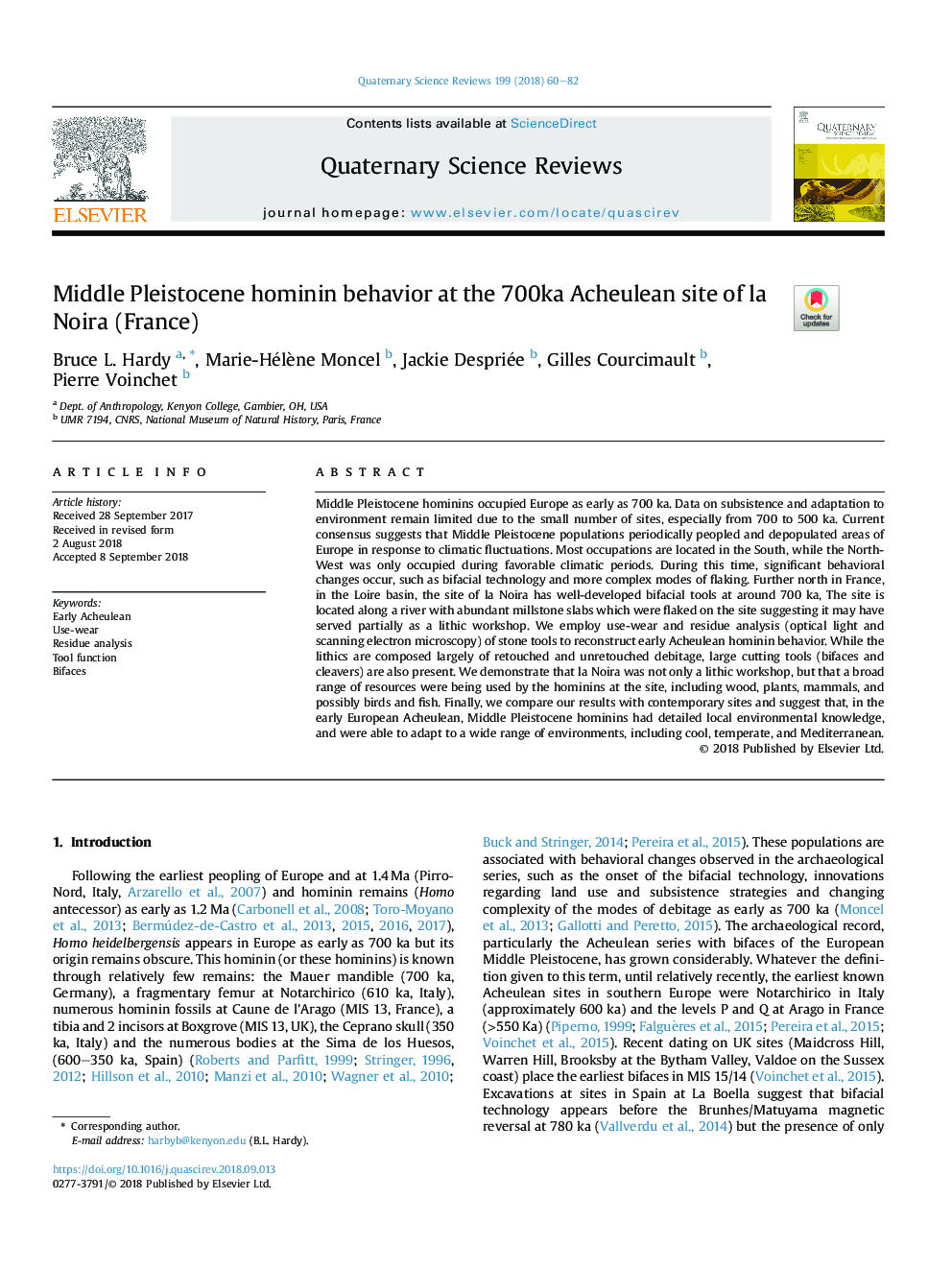| Article ID | Journal | Published Year | Pages | File Type |
|---|---|---|---|---|
| 10224398 | Quaternary Science Reviews | 2018 | 23 Pages |
Abstract
Middle Pleistocene hominins occupied Europe as early as 700 ka. Data on subsistence and adaptation to environment remain limited due to the small number of sites, especially from 700 to 500 ka. Current consensus suggests that Middle Pleistocene populations periodically peopled and depopulated areas of Europe in response to climatic fluctuations. Most occupations are located in the South, while the North-West was only occupied during favorable climatic periods. During this time, significant behavioral changes occur, such as bifacial technology and more complex modes of flaking. Further north in France, in the Loire basin, the site of la Noira has well-developed bifacial tools at around 700 ka, The site is located along a river with abundant millstone slabs which were flaked on the site suggesting it may have served partially as a lithic workshop. We employ use-wear and residue analysis (optical light and scanning electron microscopy) of stone tools to reconstruct early Acheulean hominin behavior. While the lithics are composed largely of retouched and unretouched debitage, large cutting tools (bifaces and cleavers) are also present. We demonstrate that la Noira was not only a lithic workshop, but that a broad range of resources were being used by the hominins at the site, including wood, plants, mammals, and possibly birds and fish. Finally, we compare our results with contemporary sites and suggest that, in the early European Acheulean, Middle Pleistocene hominins had detailed local environmental knowledge, and were able to adapt to a wide range of environments, including cool, temperate, and Mediterranean.
Related Topics
Physical Sciences and Engineering
Earth and Planetary Sciences
Geology
Authors
Bruce L. Hardy, Marie-Hélène Moncel, Jackie Despriée, Gilles Courcimault, Pierre Voinchet,
